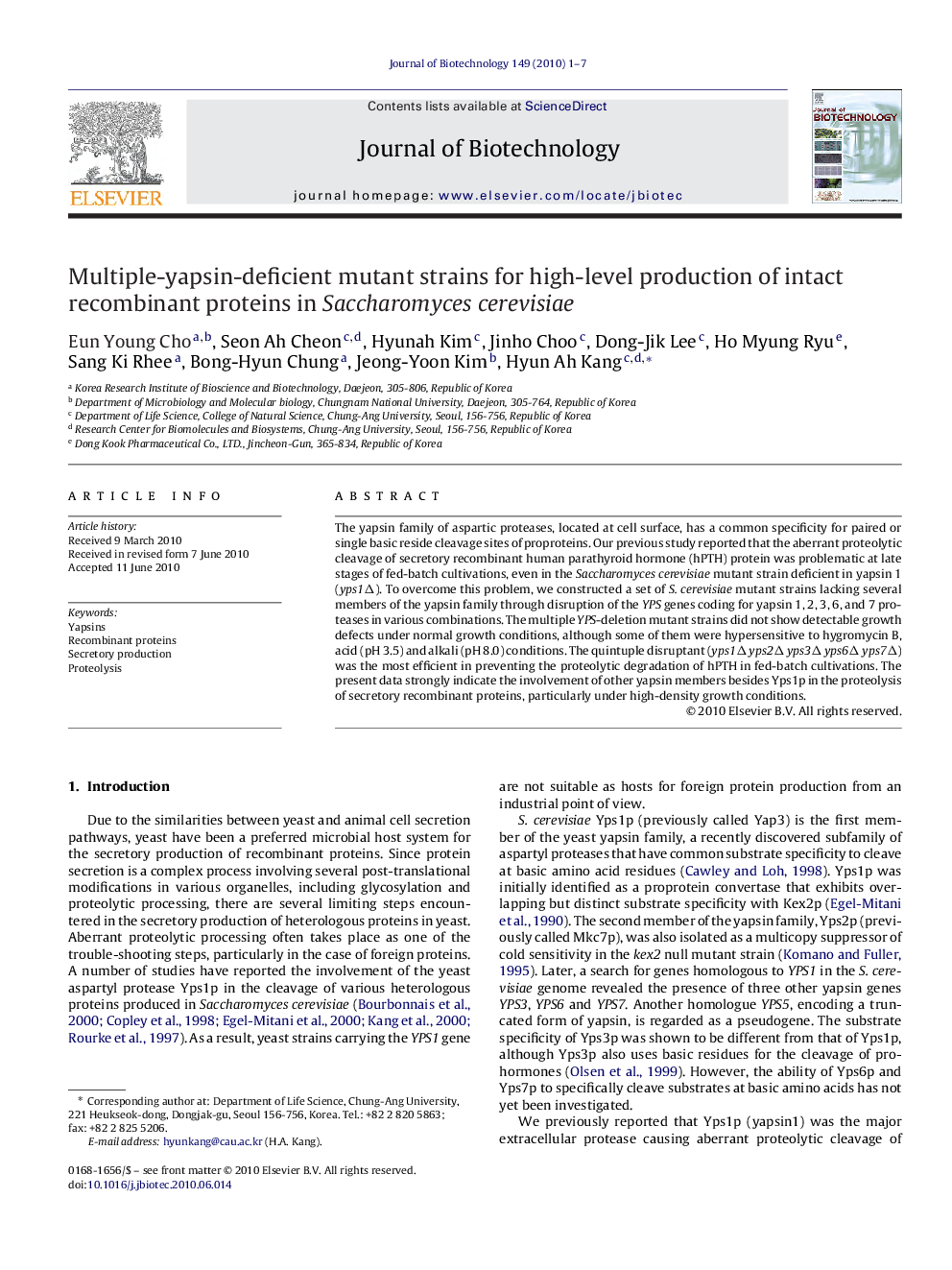| Article ID | Journal | Published Year | Pages | File Type |
|---|---|---|---|---|
| 24169 | Journal of Biotechnology | 2010 | 7 Pages |
The yapsin family of aspartic proteases, located at cell surface, has a common specificity for paired or single basic reside cleavage sites of proproteins. Our previous study reported that the aberrant proteolytic cleavage of secretory recombinant human parathyroid hormone (hPTH) protein was problematic at late stages of fed-batch cultivations, even in the Saccharomyces cerevisiae mutant strain deficient in yapsin 1 (yps1Δ). To overcome this problem, we constructed a set of S. cerevisiae mutant strains lacking several members of the yapsin family through disruption of the YPS genes coding for yapsin 1, 2, 3, 6, and 7 proteases in various combinations. The multiple YPS-deletion mutant strains did not show detectable growth defects under normal growth conditions, although some of them were hypersensitive to hygromycin B, acid (pH 3.5) and alkali (pH 8.0) conditions. The quintuple disruptant (yps1Δ yps2Δ yps3Δ yps6Δ yps7Δ) was the most efficient in preventing the proteolytic degradation of hPTH in fed-batch cultivations. The present data strongly indicate the involvement of other yapsin members besides Yps1p in the proteolysis of secretory recombinant proteins, particularly under high-density growth conditions.
